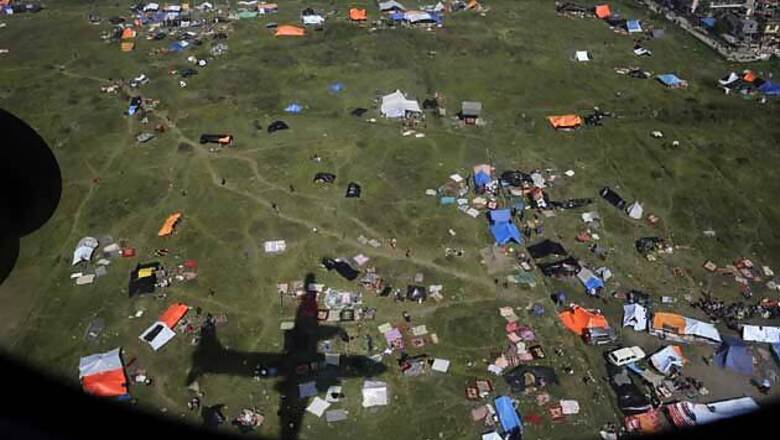
views
Kathmandu: It started like just any other Saturday morning, we were busy preparing for a wedding to go to in the afternoon. But, as they say, ‘it takes an instant to change a lifetime’ and at 11.56 AM on April 25 that is exactly what happened. The geography of our cultural history crumbled into a pile of dust.
In early April, I had taken my overseas friend to all three Durbar Squares and she considered them to be the most beautiful urban landscape she had ever seen. Little did we know that that it would be the last time we would see them. All three historic squares are now in ruins.
However, monuments can be rebuilt. The priority now is to save lives – of the trapped, the wounded and the infirm sleeping in the rain and in the open.
Could five minutes change so much? Yes, it changed the face of Nepal. But amidst all the news of deaths and destruction, there were also heart-warming stories of generosity, kindness, and altruism. There is hope for humanity, after all.
The earthquake is a reminder of trauma and loss, and it is going to affect our future behaviour as individuals, and as a nation. Not being able to meet one’s basic needs can affect anyone’s resources and coping skills. People can only tolerate so much, and to cope with the stress some survivors may be more likely to engage in delinquent or careless behaviour, and substance abuse.
There will be an increasing number of survivors of the earthquake who will experience post-traumatic stress disorder and depression. Major natural calamities like this one can cause widespread anxiety, even the slightest movement can remind individuals of the recent disaster and create panic and fear.
Apart from dealing with the immediate grief of a relative or friend who died, there is also the shock and dread at having witnessed such a cataclysmic event. Some are wracked with guilt for having survived while a near and dear one perished, others will find it difficult to erase the memory from their minds.
Children are more resilient and may not be as mentally affected as adults, and proof of that is the sight of children playing cricket in the shelters in Kathmandu these past few days, while their parents try to keep them out of the path of falling buildings. The level of trauma in children depends on the amount of fear and stress the parents or adults themselves exhibit. If parents show fear, the children are more afraid. If the parents are stressed, the children are also more tense.
Slightly older children and teenagers could be more affected by the fear of death. Seeing destruction at close hand makes a very powerful impact on the lives of young adults. Their lives are forever changed.
Children and adults may have nightmares and sleeping problems, and also have issues with relationships and coping abilities. As adults and parents, it is necessary to support each other. As for parents, be as caring as possible, explain to the children what happened without the unnecessary details, and establish a routine as soon as possible, and when needed ask for help. Make sure to take care of yourselves in the process. Embrace the emotions, as it is natural to be sad and afraid.
Once the dust settles, we will notice more mental and emotional distress and if left untreated, they can become a bigger problem later. It is common to experience post traumatic stress after such an incident, please meet with a medical or mental health professional if needed. With support, we can help each other overcome the trauma of April 25.
(Author Anjana Rajbhandary is a columnist and journalist based in Kathmandu. The article was first published in Nepal Post)




















Comments
0 comment